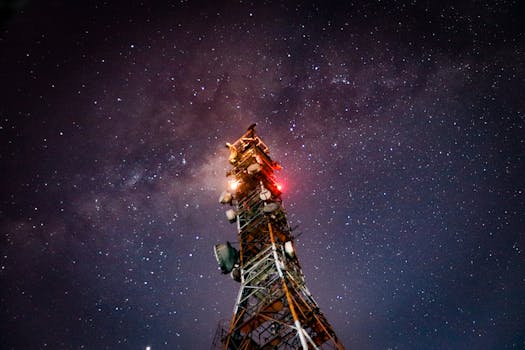MEO Satellites: Revolutionizing Global Communications with Medium Earth Orbit Technology – MEO satellites

MEO Satellites: Revolutionizing Global Communications with Medium Earth Orbit Technology – MEO satellites
MEO satellites, or Medium Earth Orbit satellites, are a type of satellite that operates in an orbit between 2,000 and 36,000 kilometers above the Earth’s surface. This orbit is lower than the Geostationary Orbit (GEO) used by traditional communications satellites, but higher than the Low Earth Orbit (LEO) used by many Earth observation and scientific satellites. The unique characteristics of the MEO make it an attractive option for a range of applications, from satellite communications to navigation and Earth observation.
The use of MEO satellites is becoming increasingly popular due to their ability to provide faster and more reliable connections than traditional GEO satellites. MEO satellites have a lower latency than GEO satellites, which means that they can transmit data more quickly. This makes them ideal for applications that require real-time communication, such as video conferencing and online gaming. Additionally, MEO satellites have a higher elevation angle than LEO satellites, which reduces the risk of interference from terrestrial sources and makes them more suitable for use in urban areas.
Applications of MEO Satellites

MEO satellites have a range of applications, including satellite communications, navigation, and Earth observation. One of the main advantages of MEO satellites is their ability to provide global coverage with a relatively small number of satellites. This makes them a cost-effective option for providing broadband internet access to remote and underserved communities. MEO satellites are also being used for a range of other applications, including maritime communications, aviation communications, and IoT connectivity.
In addition to their use in satellite communications, MEO satellites are also being used for navigation and Earth observation. The Global Navigation Satellite System (GNSS) uses a constellation of MEO satellites to provide location information and timing signals to receivers on the ground. This system is used for a range of applications, including aviation, maritime, and land transportation. MEO satellites are also being used for Earth observation, providing high-resolution images of the Earth’s surface and atmosphere.
Benefits of MEO Satellites

The use of MEO satellites offers a range of benefits, including faster and more reliable connections, global coverage, and cost-effectiveness. MEO satellites have a lower latency than traditional GEO satellites, which makes them ideal for applications that require real-time communication. They also have a higher elevation angle than LEO satellites, which reduces the risk of interference from terrestrial sources and makes them more suitable for use in urban areas.
In addition to their technical benefits, MEO satellites also offer a range of economic and social benefits. They can provide broadband internet access to remote and underserved communities, which can help to bridge the digital divide and promote economic development. They can also be used to provide critical communications services, such as emergency response and disaster relief.
Challenges and Future Developments

While MEO satellites offer a range of benefits, there are also several challenges and limitations to their use. One of the main challenges is the high cost of launching and operating a constellation of MEO satellites. This can make it difficult for companies and organizations to justify the investment in MEO satellite technology. Additionally, MEO satellites are subject to interference from other satellites and terrestrial sources, which can impact their performance and reliability.
Despite these challenges, the use of MEO satellites is expected to continue to grow in the coming years. Advances in technology are making it possible to build smaller and more efficient MEO satellites, which can reduce the cost of launching and operating a constellation. Additionally, the development of new applications and services, such as 5G and IoT, is driving demand for MEO satellite capacity.
See more:





